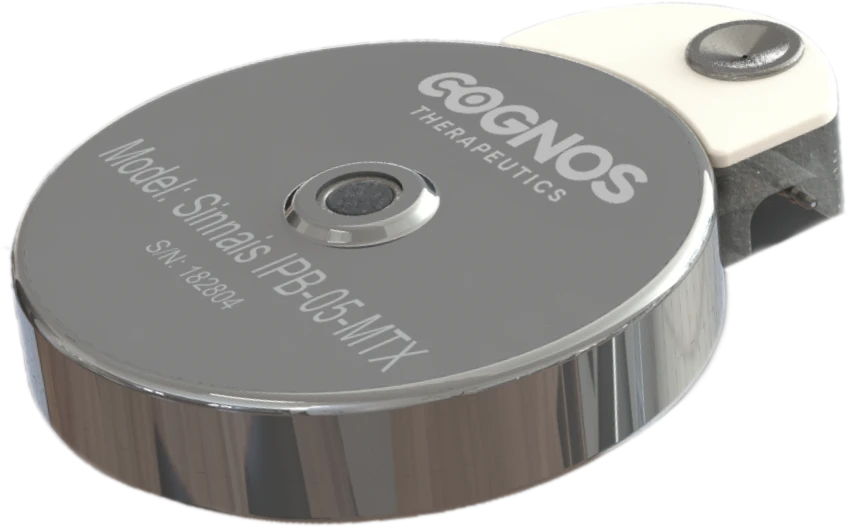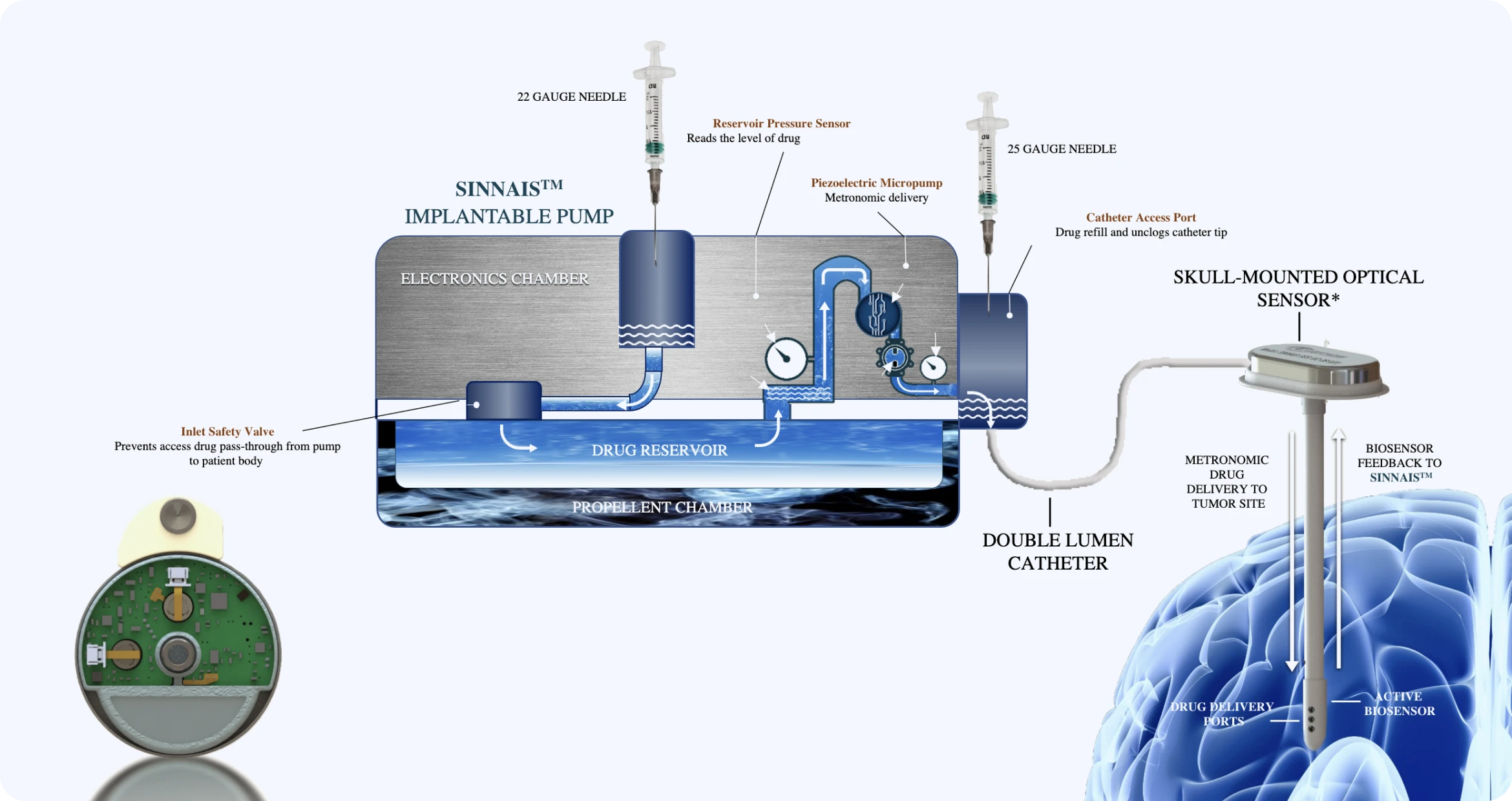Technology Overview
Metronomic Marvel
A Significant Leap Forward: SINNAIS™ the first AI driven smart implantable pump
The SINNAIS™ implantable smart pump device combines a fully implantable programable pump capable of metronomic, delivery of microliter quantities of a therapeutic, a single lumen intraventricular catheter, and a microprocessor for controlling the pump and communicating wirelessly with external devices. It is a companion device for delivery of chemotherapeutic agents and other therapeutics (small and large molecules) directly to the brain and eventually to other organs and sites in the body.

